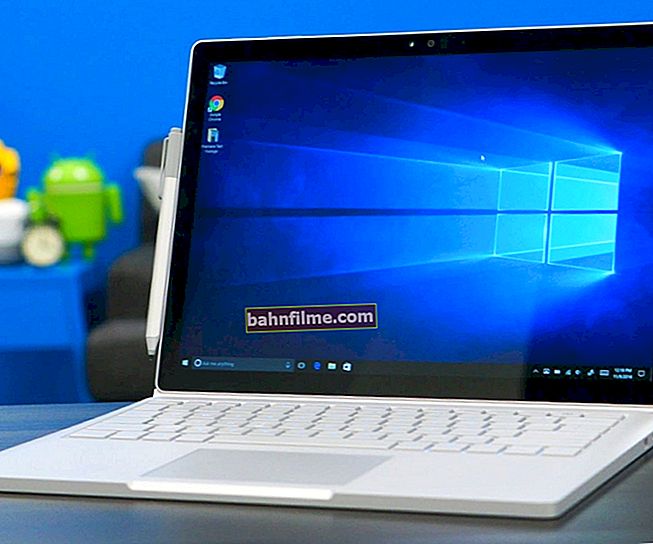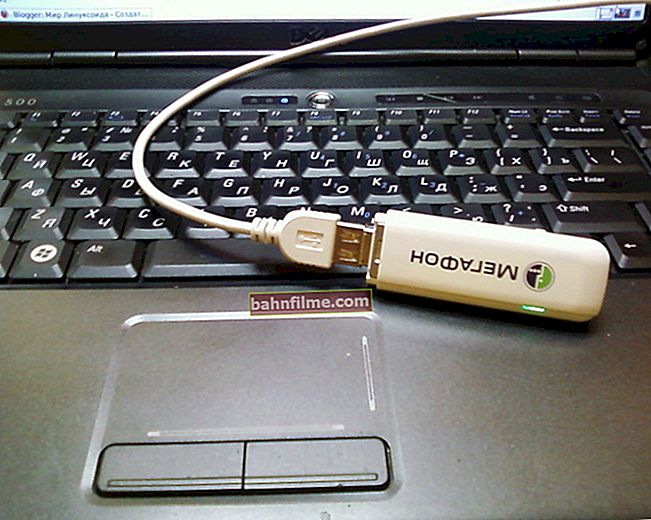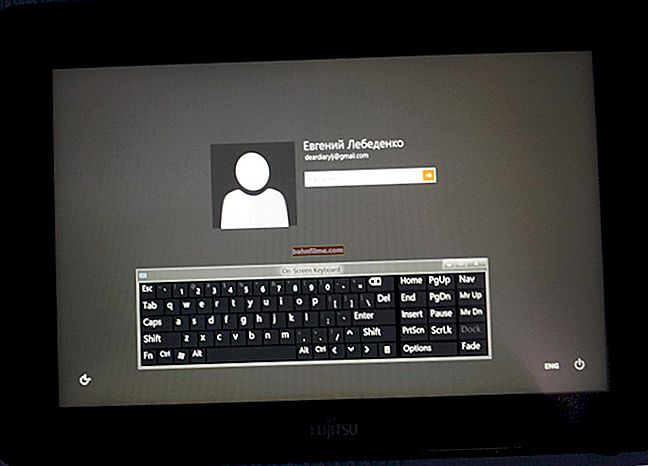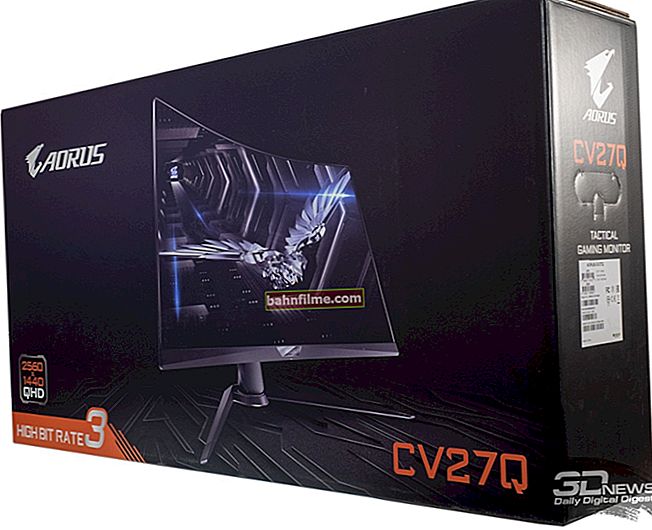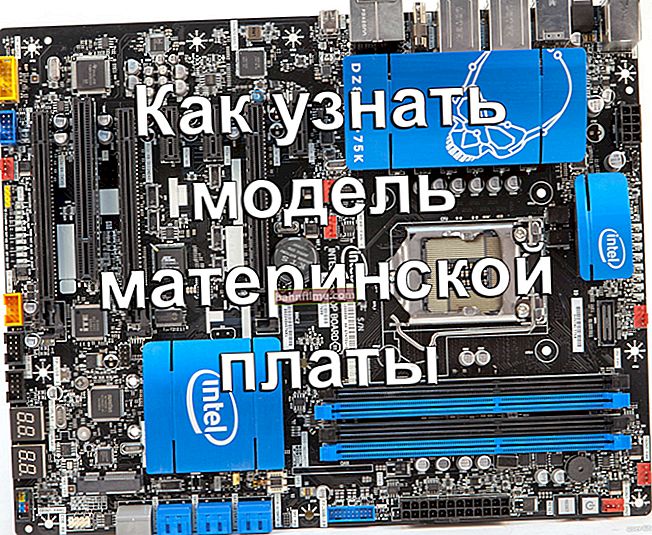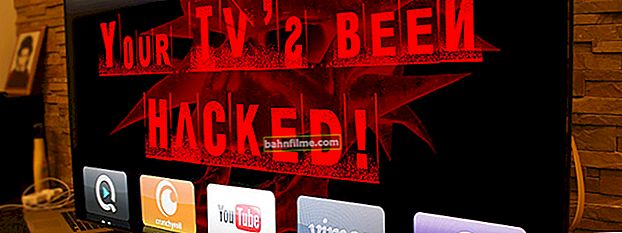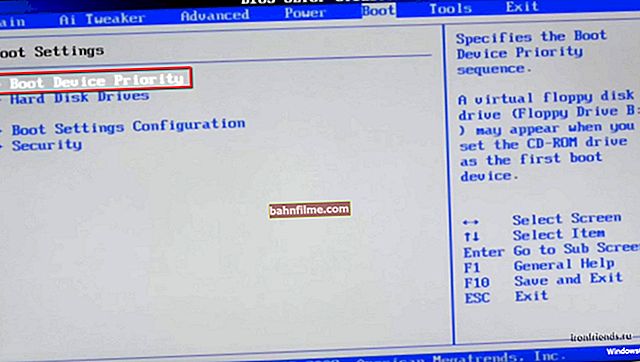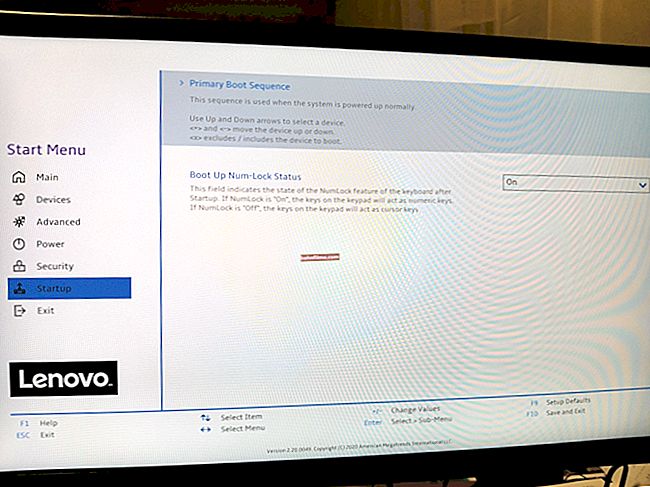 Good day!
Good day!
Disk space - never too much!
This truth has been more relevant than ever for the past 30 years. Despite the development of the IT sphere (the emergence of cloud drives, network storages, high-speed Internet) - all the same, we are faced with a shortage of free space on the HDD.
The obvious solution to this problem is to buy and connect another drive. But, as with any issue, this has its own nuances ... Actually, in this article I decided to consider this issue in more detail (so that the article would be understandable to most inexperienced readers).
And so, let's start to understand  ...
...
Note! Please note that disk space may be "wasted" due to suboptimal Windows settings (for example, swap and hibernation files "bloated"), or a large accumulation of garbage. I recommend clearing all the trash and optimizing the OS (how to do this) before buying a new disk (perhaps the free space will be enough for all your tasks).
*
Connecting a second hard drive: options
Option 1: installing a classic HDD in a PC system unit
A few words about choosing a new disk
In general, choosing a new hard drive is a separate big topic. Here I want to focus on one important detail - interface ... Now the most common are IDE (legacy) and SATA. Before buying a disc, I recommend checking your PC (especially if you already have an old one) and find out which interface is supported (otherwise, in addition to the disk, you will have to purchase adapters / adapters - and with them additional problems often arise ...) .
In this article, I will assume that you have a modern PC (with support for the SATA interface (the most common option)).

SATA III and IDE - comparison (as an example. The photo shows 2 hard drives)
About installation:
- first turn off the computer and disconnect all cables and cords (mouse, keyboard, speakers, etc.) from the system unit;
- to get to the "insides" of the system. block, usually use a removable side cover (for a typical block it is on the left). This is exactly the option shown in the photo below: in order to remove it, it is enough to unscrew a couple of fixing screws and slightly move to the side (sometimes there are ordinary latches instead of them);
- hard drives are usually located in a special compartment of the system unit (most often at the bottom right). As a rule, several cells (places) are provided for the installation of disks (2 ÷ 4, depending on the block).
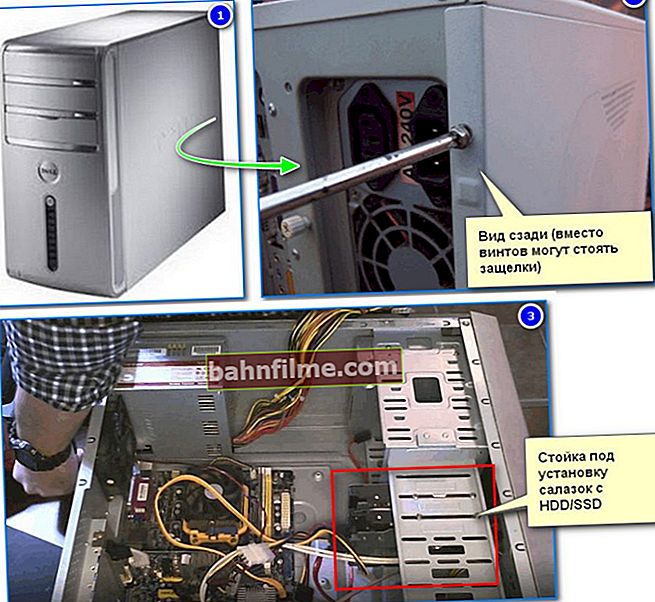
Remove the side cover of the system unit, find a rack for disks
- in fact, you need to install your disk in one of these cells and fix it with screws (usually included). In some cases (for example, when using 2.5-inch disks), specials may be needed. sled (usually they come with the disc). I draw your attention to the fact that it is better to place the second disk farther from the first - this way they will heat up less from each other (how to find out the temperature of the disk);
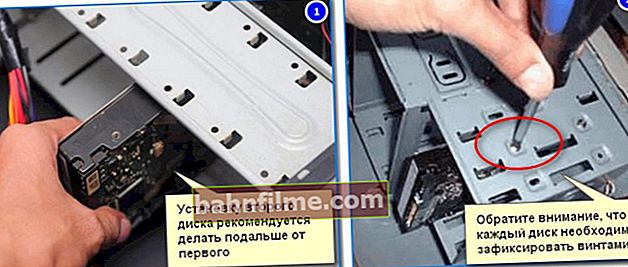
Installing and Securing the Disc
- then you need to connect the power connector and the SATA data cable to the corresponding disk ports (as a rule, most system units have several free cables for connecting additional drives. If there is no "extra" cable, you can buy it at any computer store). The way they look is shown in the photo below, you can also pay attention to the connection of the first disk and do it by analogy (in principle, you cannot confuse them with any others).

Connecting SATA and power cable to the drive
- then you can put the side cover back, turn on the system unit, and start working. By the way, the PC does not always see a new disk (if this is the case with you, I recommend that you familiarize yourself with the add-on below).
Supplement (if the PC does not see the new disk)!
After you turn on the computer (with the second disc * installed), it is not at all a fact that you will immediately see this drive in "My Computer" or "Explorer". The fact is that new disks often come unformatted (and such a drive cannot always be seen by Windows).
Therefore, after turning on and loading Windows, I recommend that you immediately go to Disk Management (this is a system utility in Windows) or use special utilities for working with disks to format the drive and start working with it fully.
Option 2: connect the drive to a USB port (external drives)
If you do not want to "climb" the insides of the system unit (and many novice users ask you to suggest just such an option so as not to do this), or you simply do not have a warranty on your PC (and do not want to open the unit and risk it again) - that is, the way out ...
The fact is that now there are hundreds of different specials on sale. boxes: they are a collapsible box (see the screen below), inside which you can install a classic hard drive (both 2.5 and 3.5 inches (i.e. a disk from both a laptop and a PC)) and then connect it to the USB port. Moreover, you can connect not only to a computer, but also to a small netbook, for example.
Working with such a disk is no different from a regular disk (which is inside the system unit): you can also store music, movies, documents, games, etc. on it (plus, it's easy to transfer and connect it to other devices).
The only drawback: there may be problems with installing Windows OS on it (therefore, using an external drive as a system drive is not worth it. For everything else, it is quite a good option).

BOX for connecting a disk to a laptop-PC
By the way, not only boxes (for classic HDDs) are on sale now, but also full-fledged external hard drives. They are now quite wide variety, differ not only in volume, but also in the connection interface, dimensions, speed, etc.
To help! How to choose an external hard drive (HDD) - 7 important points - //ocomp.info/kak-vyibrat-vneshniy-zhestkiy-disk.html

Stationary external hard drive - connects to a 220 V network via a power supply
To help!

You can buy any disc boxes at "bargain" prices, and external hard drives themselves can be bought in Chinese online stores (however, be careful when choosing a seller: choose a product only from sellers with a high rating!). You can find out about the best Chinese stores here: //ocomp.info/kitayskie-internet-magazinyi.html
Option 3: if you have a laptop ...
Many people under the word "computer" often mean a laptop. That is why in this article I will also consider this case ...
In general, the laptop is difficult to upgrade. If you can "stuff" several hard disks into a regular system unit (for example, 5-6 pieces), then many classic laptops have only 1 HDD slot (provided by the manufacturer). And, as a rule, it is already occupied by the current disk - i.e. there is no slot for the second drive.
However, do not rush to despair, there are solution options:
- Many modern laptops and PCs have slots for SSD M2 drives. More details about them: //ocomp.info/ssd-m2-kak-vyibrat-nakopitel.html

Samsung NVMe SSD - what a M2 SSD looks like
- an external hard drive can also be connected to a laptop (I spoke about them a little higher in the article);
- if you have a CD / DVD drive, then you can install a second disc instead (instead of the drive, a special "pocket" with a drive is put). These things are sold in Chinese online stores. More details here: //ocomp.info/2-diska-v-noutbuke.html
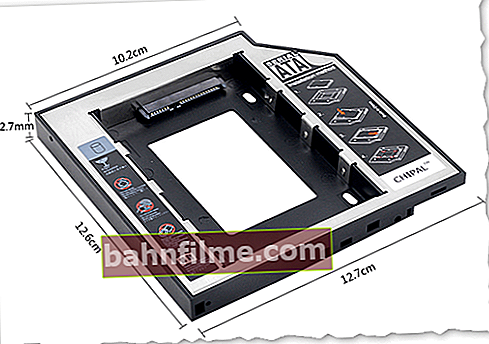
Universal adapter for installing a second disk in a laptop instead of a CD-ROM drive (2nd HDD Caddy 12.7 mm 2.5 SATA 3.0)
- some devices are equipped with two slots for HDD (usually on expensive laptops. Check if you have such a model).
*
That's all for now, additions on the topic are welcome.
Happy work!






